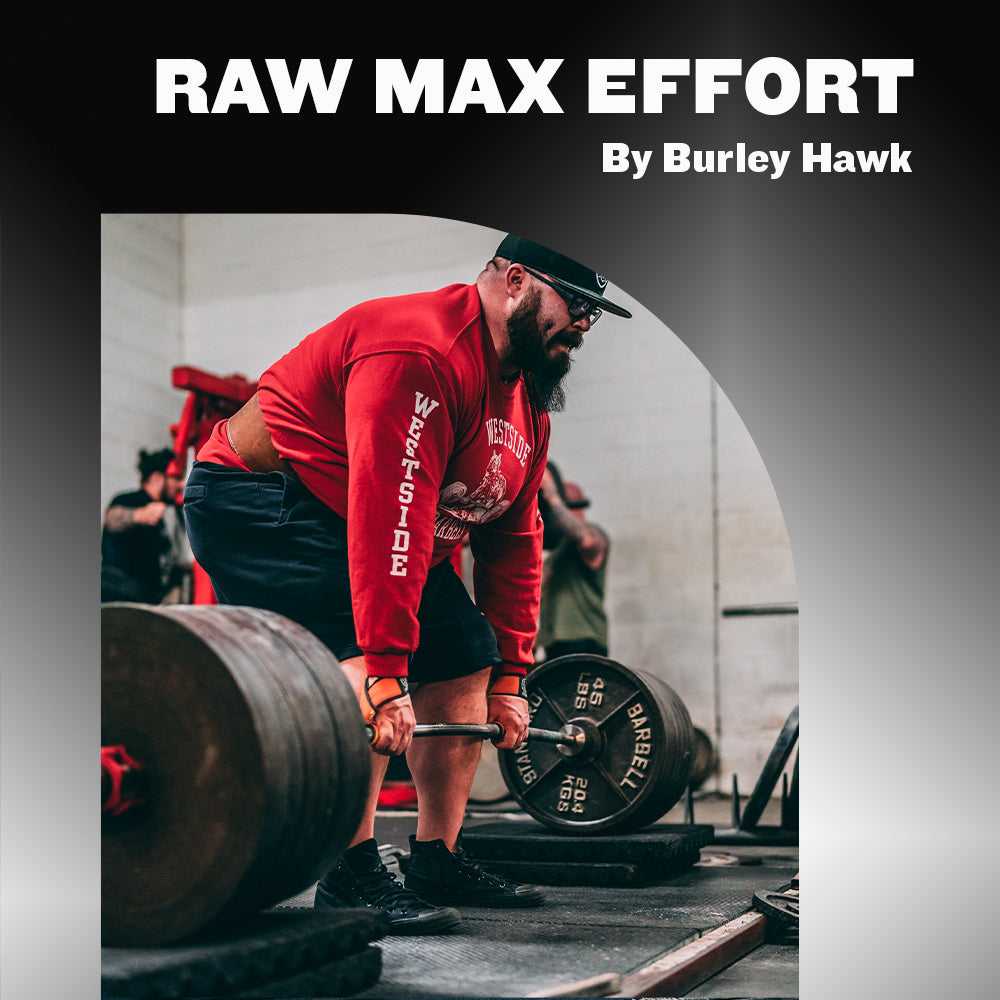WSBB Blog: Max Effort Management for Raw Powerlifters

No matter your athletic goals, becoming as strong as possible will always be advantageous. However, if you are a raw powerlifter, becoming as strong as possible is required. Unfortunately, many lifters misunderstand the need for regular exposure to max effort training intensities.
The conventional belief amongst many powerlifters is that regular implementation of max-effort training days almost certainly will lead to injury. In reality, the exact opposite is true. Failure to regularly expose a lifter to proper training intensities will leave the lifter unprepared and weak, raising the risk of injury significantly.
Below, I will explain why max effort training is important and how to manage the programming of your max effort training days.
Motor Unit Activation
Proper training intensity is significant because of something called motor unit activation. In Science and Practice of Strength Training, MUs are described as the basic elements of motor system output. To improve absolute strength, you must recruit max amounts of MUs. During voluntary contractions, the orderly pattern of recruitment is controlled by the size of motoneurons, also known as the size principle.
The book goes on to say that only small motoneurons are recruited when the training load is light. As the training load (intensity) is increased, the activation of MUs with large motoneurons increases. MUs with the largest motoneurons, which also possess the largest and fastest twitch contractions, have the highest thresholds and are recruited last.
Simply put, max effort training provides the lifter with exposure to correct training intensities causing greater MU activation, ultimately leading to increased levels of absolute strength and overall sports performance.
Risking Injury
As mentioned above, many believe regular exposure to max effort training is a recipe for disaster. In reality, infrequent exposure to proper training intensity will quickly lead an athlete to injury. By avoiding high intensities, not only do you decrease your MU activation, you fail to acclimate to the task of lifting heavy weights efficiently.
If you are known for hitting home runs, you probably spend a reasonable amount of time working on your hitting power in batting practice. If you are a race car driver, you spend most of your time driving fast to acclimate to the demands of the sport. However, many powerlifting coaches have convinced lifters that you do not need to train heavy regularly to become as strong as possible.
This perspective is not only wrong, but it is dangerous. By convincing lifters to avoid training in the proper intensity ranges, a coach wastes an athlete's training time. Additionally, they are leaving them unprepared for the actual tasks of the sport and at greater risk of injury.
Managing Max Effort
Max effort training days must be appropriately planned, with lower and upper exercises changing week to week. This means that over four weeks, a lifter should train four different lower exercises along with four different upper exercises. Programming your max effort this way provides the highest degree of training stimulus while avoiding accommodation entirely.
One thing to understand is max effort training requires the lifter to be realistic and sensible in their expectations. Should you go into each max effort training session expecting to break your former PR for that specific exercise? Yes. Are there going to be occasional weeks where you may fail to complete that goal? Yes. If you miss, take the data the miss provides and use it to formulate a plan to address whatever muscular weakness may exist.
When programming max effort training, you can go a few different routes. The conventional and most effective approach to max effort training is working up to a max effort single each max effort training day. However, there will be times where you may have to switch gears and catch up on recovery to allow you to get back on track lifting new max effort single rep PRs.
By implementing the 3/speed/5/1 max effort training breakdown for a month, you can still reap the benefits of high-intensity training while accelerating recovery by avoiding all-out max effort lifts for a few weeks.
The three rep lift will be around 90-95% of 1rm, the speed lifts will be approximately 75-80%, the five rep lift will be around 80-85%, and the max effort single will be a PR lift. Any time I have reached a point where I have accumulated some mileage from max effort single rep lifts and need to get caught up on recovery, this is my go-to approach. Thus far, it has never failed to work.
Here is what a month of max-effort work would look like following the 3/speed/5/1 max-effort rep scheme:
Week 1 - Front squats, top set of three.
Week 2 - Beltless speed deadlifts, six to eight sets of singles or doubles.
Week 3 - Giant cambered bar goodmornings, top set of five.
Week 4 - Bow bar box squat, work up to a max effort single (PR)
Success or Failure
Your ability to succeed in your sport depends significantly on your training plan. This training plan must adequately prepare you for competition, and to do this, you must identify the physical demands of your sport. As a powerlifter, the sport calls for the constant improvement of absolute strength.
Max effort training is the only way to introduce the stimulus necessary to force the proper training adaptations that ultimately lead to increased sports performance, not only in powerlifters but all other athletes. No matter what sport you play, being strong is essential. As a powerlifter, absolute strength is the entire point of the sport.
Be wary of the strength coach who preaches fear of actual strength training. Nowadays, too many coaches focus on the extra bullshit and avoid the actual work that must be done. They claim to be based in science yet reject scientifically proven training methods.
If you are a strength athlete and are not regularly training at intensities above 90%, you are undoubtedly unprepared. Have discipline, program intelligently, and you will reap all of the benefits associated with max effort lifting.
Works Cited:
Zatsiorsky, V. M., Kraemer, W. J., & Fry, A. C. (2021). Science and Practice of Strength Training. Human Kinetics.





